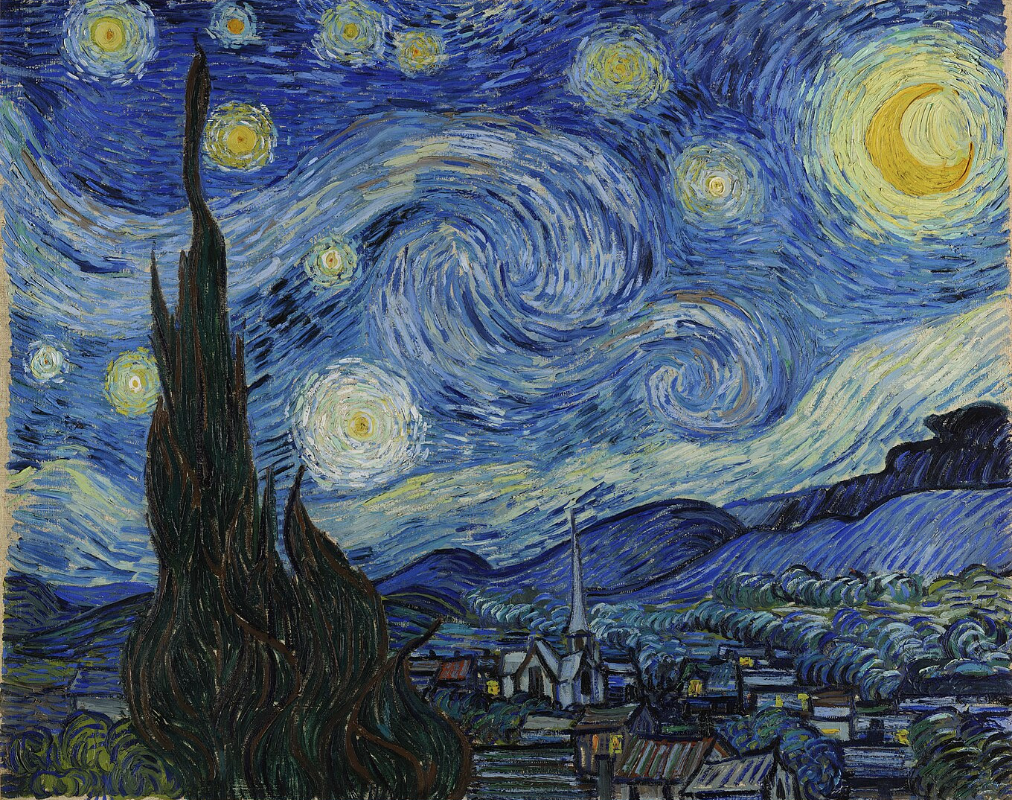Teach This Poem, though developed with a classroom in mind, can be easily adapted for remote learning, hybrid learning models, or in-person classes. Please see our suggestions for how to adapt this lesson for remote or blended learning. We have also noted suggestions when applicable and will continue to add to these suggestions online.

Look closely at the painting “Starry Night” by Vincent Van Gogh.
The following activities and questions are designed to help your students use their noticing skills to move through the poem and develop their thinking skills so they understand its meaning with confidence, using what they’ve noticed as evidence for their interpretations. Read more about the framework upon which these activities are based.
-
Warm-up: If you can, take a walk around your school building. Look and listen carefully. Once you get back in the classroom, free-write for a few minutes about the images and sounds that you heard. Share with your classmates. What makes your school unique?
-
Before Reading the Poem: Look closely at the painting “Starry Night” by Vincent Van Gogh. What immediately catches your attention? Look again. What else do you see? Look again. What do you see that you might never have seen?
-
Reading the Poem: Silently read the poem “Appalling Heart” by Elsa von Freytag-Loringhoven. What do you notice about the poem? Note any words or phrases that stand out to you, or any questions you might have.
-
Listening to the Poem: Enlist two volunteers and listen as the poem is read aloud twice, and write down any additional words and phrases that stand out to you. Or, you can opt to listen to a reading of the poem.
-
Small Group Discussion: Share what you noticed about the poem with a small group of students. How do the resources from the beginning of class connect to your reading and understanding of the poem? How would you describe the city in the poem? Why? What is the “[c]ity stir”? How might your town or city sound?
-
Whole Class Discussion: How do the uses of em dashes and punctuation inform your reading of the poem? How might the poem be different without them? What do you think of the title “Appalling Heart”?
-
Extension for Grades 7-8: Think back to the activity at the beginning of class. Choose a place that is important to you. Write a poem about this place. Read it to your classmates.
-
Extension for Grades 9-12: What makes a place unique? Read more poems about cities. How are the places in these poems unique? Share your poem and thoughts with your classmates.
“Also a rebellion against traditional art forms, Dadaists were concerned with spontaneity, automatic writing, and chance operations. Collage became an important element in both art and poetry, as did typography. Dadaist Tristan Tzara urged poets to cut words out of newspapers, while artist Kurt Schwitters designed poems with anthropomorphic letters—the character “B” with feet and arms, for example. Dadaists were also interested in poems that were ephemeral and erasable, such as poems written in sand or on a blackboard.” Read more about Dadism.
